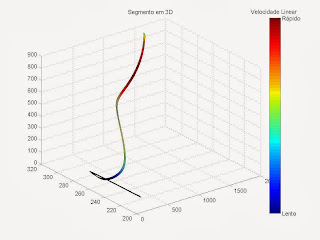In biomechanical analysis is very common noise included in the signal, ie, signals that do not belong to the observed phenomenon or that are not of interest to the objective of the researcher. Thus, filtering procedures have been used to try to reduce the noise in the signal. Filtering is a mathematical procedure that tries to mitigate the noise and maintain signal belonging to the phenomenon analyzed. Different intensities filters are checked in an attempt to reduce the noise in the signal. Intense filters tend to reduce the noise in the signal, but at the same time can compromise data integrity. While less intense filters can ensure signal integrity, without properly remove noise. Thus, the residual analysis procedure was proposed by Winter (1990) to find an optimal theoretical intensity for attenuating noise in the signals.
To perform the residualanalysis, the signal is filtered with various cutoff frequencies, near the cutoff frequency accredited as most appropriate. After the root mean square error (mean residual) of each filtered signal as a function of signal noise is calculated. The residue of each filtered signal, depending on their cutoff frequency used, is then analyzed graphically. According to Winter (1990) the projection of residue and filter cutoff frequencies provide a profile of curve with an abrupt increase in a given instant. This abrupt increase in the profile of the projection between residuals and cutting frequencies determines the great theoretical cutoff frequency of filter .
Here's a link to download algorithm implemented in Matlab ® to perform residual analysis. Matlab Code
To use the function provided above you should:
- Select the frequency of your signal;
- Indicate the column for the variable to be tested in your data matrix;
- Select the filter order to be tested;
- Select the number of frequencies to be tested. Preferably enter a not too excessive number of frequencies in relation to the frequency cutoff commonly used for your type of signal. For example, for signals from the kinematic cutoff frequency most used is approximately 6 Hz, then we would use to test approximately 20 frequencies. As for signs that are commonly filtered at about 95 Hz would test with 200 frequencies. An excessive number of frequencies hinders visualization of the break point of the linearity of Residues x Cutting frequencies curve;
- Finally, point by clicking on the graph at the point of the break point of the linearity of Residues x Cutting frequencies curve.
References:
Hope that is useful.
A big hug to everyone!








